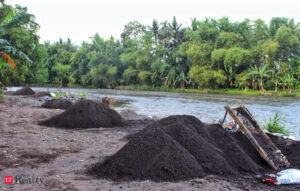Delhi Pollution: What causes white foam in Yamuna and its dangerous side effects

An alarming view has come to light in New Delhi as the Yamuna River is covered with a thick layer of white foam. This phenomenon, particularly prominent during the festive season, has raised concerns about its possible health consequences as celebrations like Chhath Puja approach.
Unusual weather changes
This year, the lack of flood surges during the monsoon has caused a rise in pollution levels in the river.Traditionally, these floods help clean the river, but without them, the levels of pollution have increased, leading to the formation of foam.
Understanding the formation of foam

The foamy layer on the surface of the river is caused by the reaction between toxins and organic matter, including untreated sewage and industrial waste. Oils and greases from rotting vegetation mix with chemicals, creating foam that floats on the water. This foam, often visible during festivals, suggests severe levels of pollution in the Yamuna.
Key contributors to pollution levels
Untreated sewage
Massive amounts of untreated wastewater from Delhi and nearby areas significantly contribute to pollution.
Industrial byproduct
Waste products and discharges from factories, especially in the paper and sugar industries, heighten the pollution levels.
Organic matter
The decomposition of plants contributes further to organic pollution, enhancing the formation of foam.
Health hazards linked to the foam
Respiratory issues
The inhalation of poisonous substances from the foam can trigger severe respiratory issues. People with existing respiratory diseases such as asthma might face difficulty in breathing and intense coughing.
Skin reactions
Exposure to polluted water can cause skin irritation and horrifying rashes. The existence of harmful substances, chemicals, and high levels of phosphates can make the existing skin conditions worse, or even lead to new allergic reactions.
Waterborne diseases
The organic pollution supports and stimulates the growth of harmful bacteria and viruses. Using contaminated water for drinking or taking a bath increases the risk of waterborne diseases such as jaundice, cholera, and diarrhea.

Long-term chemical exposure
Extended exposure to the toxic chemicals in foam, with heavy metals such as mercury and lead, is a significant health risk in itself. The accumulation of such substances causes chronic diseases of essential organs- – particularly the liver and kidneys.
Government response to pollution
To deal with the rising pollution in Delhi, the government has established a committee to focus on 13 problem areas. This team will look for local sources of pollution and develop a plan of action. Engineers from the Delhi Pollution Control Committee (DPCC) are evaluating these regions to help manage the situation.
Image credit: X/@AjitSinghRathi








